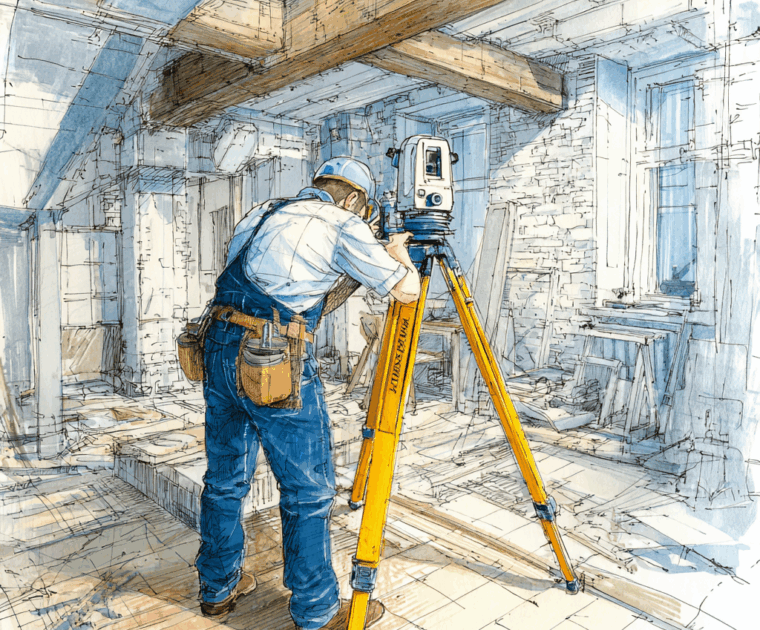How Measuring Devices Reduce Human Error in Measurements
Human errors are surprisingly common when it comes to taking and writing down measurements. Whether you’re a carpenter, architect, or DIYer, even a small mistake—like swapping two digits—can ruin a project. Fortunately, modern measuring tools help eliminate these costly errors.
How Often Do People Make Mistakes?
Studies show that around 1–2% of all manually recorded numbers contain errors (Norman, 1982; Reason, 1990).
One of the most frequent mistakes is transposition—when two digits are accidentally reversed, like writing 64 instead of 46. According to Damerau (1964), transpositions make up about 13% of all human input errors.
That means in a set of 1,000 measurements, you can expect around 10 to 20 mistakes, with 1–3 of them being digit swaps.
How Measuring Devices Help
Modern measuring devices such as laser distance meters, digital angle finders, and 2D laser scanners reduce errors by:
- Automatically capturing measurements with precision
- Showing the numbers with clarity at their screens makes it easier to read.
- Saving or exporting data directly, avoiding manual entry mistakes
- Giving immediate, consistent results
- Measuring hard-to-reach areas with greater accuracy
The less humans have to write down or interpret data, the fewer mistakes are made.
Why 2Dscanner is Different
At 2Dscanner, we’re focused on giving professionals a better and more efficient way of measuring, at an affordable cost. Our tools help you avoid human error and capture only the data you actually need—nothing more, nothing less.
Why pay for a 3D scanner that gives you millions of unnecessary points, when 2D data is enough to get the job done faster and smarter?
With the 2Dscanner, you can avoid common issues like mistyped dimensions or missing measurements.
Learn more about the 2Dscanner in our FAQ section, or dive deeper with our help documentation. Even better, watch the 2Dscanner in action on YouTube.
Sources
- Damerau, F. J. (1964). A technique for computer detection and correction of spelling errors
- Norman, D. A. (1982). Learning and Memory
- Reason, J. (1990). Human Error





